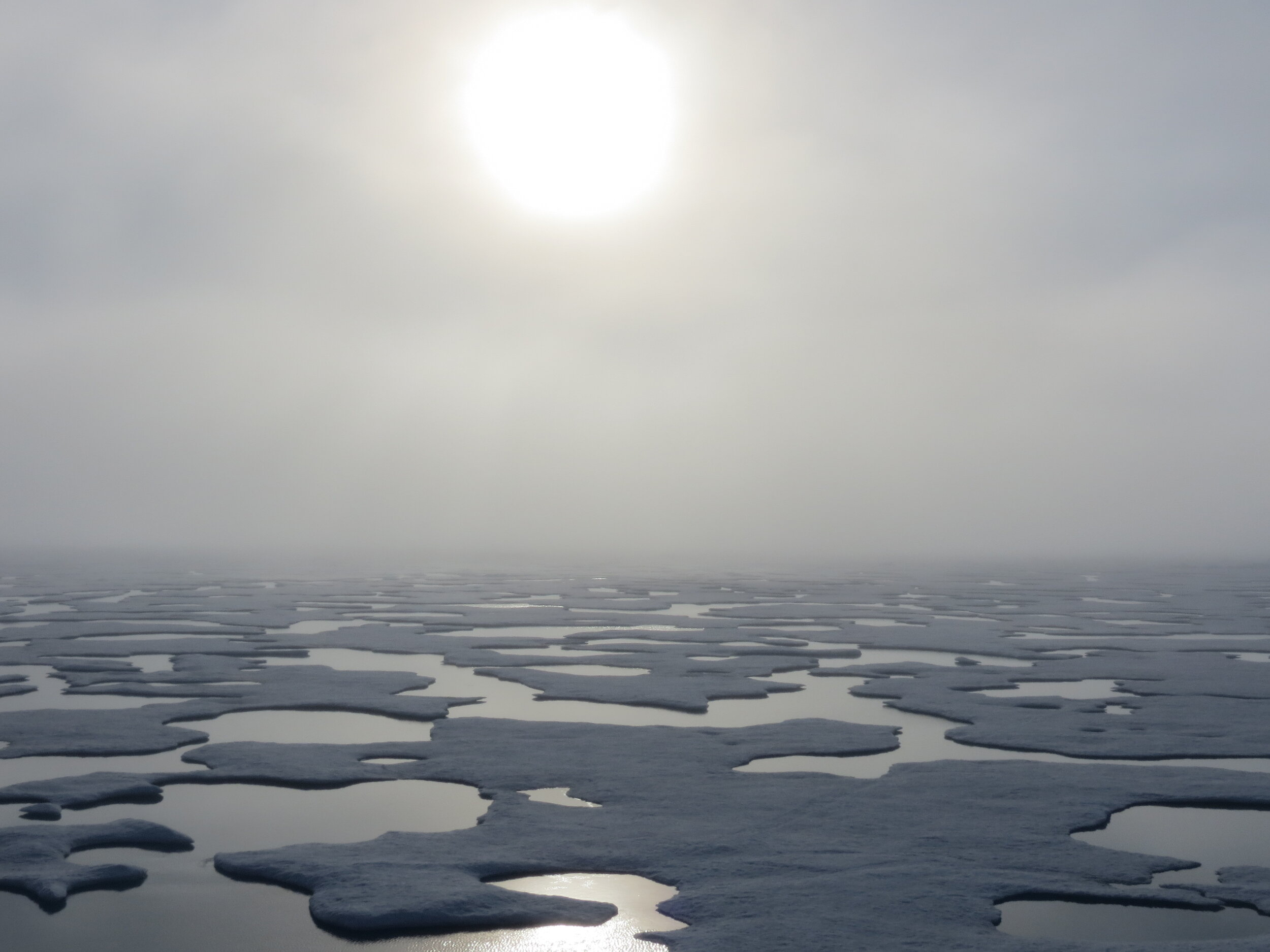The strong winds that contributed to melting in the Last Ice Area in 2020 were an unusual occurrence, but they act as a reminder that no portion of the Arctic is immune to the effects of climate change. Photo credit: Kai Boggild, courtesy of Imaggeo.
By Catelyn Fitzgerald ’23
Environmental Editor
The image of melting Arctic ice has long been used to represent the future consequences of climate change. Despite this reputation, one region of the Arctic left scientists shocked when it began to show signs of melting. Scientists aboard an icebreaker in August 2020 were shocked when their satellites identified a route through a large glacier in the Wandel Sea. The region, known as the Last Ice Area, is considered by scientists to be a last stronghold of the Arctic glaciers. While other regions of the Arctic are projected to experience total melting in the summers by mid-century, the Last Ice Area is expected to have year-round ice until 2100. The identification of melting significant enough to allow for an icebreaker to pass through the glacier indicates severe effects of climate change could be coming to the region sooner than expected.
The Last Ice Area is located off the northern coasts of Greenland and Canada. In this region, a circular current helps hold the glacier together, even as the ocean warms. But while the unique conditions surrounding the glacier offer some protection from summer melting, it is still vulnerable to the effects of climate change. Scientists recently identified the cause of early melting in the Last Ice Area to be a combination of gradual melting due to climate change and extreme winds pushing parts of the ice sheet out to sea. Researchers determined that these wind conditions would not have damaged the glacier, had melting not caused rising temperatures. The strong winds that contributed to melting in the Last Ice Area in 2020 were an unusual occurrence, but they act as a reminder that no portion of the Arctic is immune to the effects of climate change.
In an effort to preserve glaciers, one startup company has modeled a re-icing machine, which could both restore melting glaciers and slow the onset of climate change. The project, called Real Ice, is a part of For Tomorrow, an online platform designed to let individuals and groups share solutions to sustainability issues. The re-icing machines proposed by Real Ice would drill through icebergs to the ocean below and, using powerful pumps, bring ocean water up onto the surface of the glacier, where it would freeze, adding ice mass. Not only would re-icing slow the melting of glaciers, the new ice would offer a more reflective surface than the ocean. This would allow the Earth’s surface to reflect more of the sun’s rays back into the atmosphere rather than absorbing the heat into the ocean. According to Real Ice, the addition of 132.25 square meters of sea ice would offset one ton of CO2 emissions. The re-icing machines could be a promising economic opportunity for Arctic communities, as they could sell the CO2 that they offset as carbon credits to companies around the world.
Real Ice is not the first group to take a technology-driven approach to protecting glaciers. Another nonprofit, the Arctic Ice Project, proposes spreading billions of microscopic glass spheres over the surface of glaciers to create a highly reflective layer that would slow melting. The beads are as tiny as grains of sugar, and are currently undergoing testing to ensure they will pose no harm to Arctic ecosystems. Creators of the Arctic Ice Project assert that the use of the technology in targeted areas could secure another 15 years for countries to reduce their greenhouse gas emissions before the effects of climate change become irreversible.
Researchers have also proposed creating physical barriers to stabilize glaciers and prevent rapid collapse caused by a condition called Marine Ice Sheet Instability, which can occur after a glacier experiences a certain degree of melting and is no longer securely anchored to the ground. Yet another approach is to pump cold water under ice sheets to thicken them. All of these projects would be major undertakings, demanding billions of dollars and requiring the expertise of the world’s top engineers and scientists, as well as years of work, but so far none have moved past the testing phase. While some may see these solutions as unrealistic, the premature melting in the Last Ice Area shows that geoengineering may be a necessary short-term venture to keep the Arctic glaciers intact until long-term reductions in atmospheric greenhouse gases are achieved.

